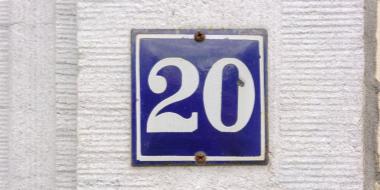Essential tips for showcasing GitHub on your resume effectively
Any developer who has used the popular GitHub platform wants to know, “Should I put GitHub on resumes?” You’ve probably wondered the same thing. When it comes to making an impression as a developer, including your GitHub profile on your resume can be a game-changer. Here’s everything you need to know about putting GitHub on resumes.

What is GitHub and why is it important in software development?
GitHub is a widely used platform that provides version control and collaboration features for software development. It allows you to host your code, collaborate with others, and track changes to your projects over time.
This is an essential tool in today’s software industry and is trusted by millions of developers who want to share their work and collaborate on open-source projects.
For a web developer or software engineer, putting GitHub on resumes can be a great way to demonstrate coding skills and problem-solving abilities. Now, let’s unpack the question, “Should I put my GitHub on my resume?”
Do you need it in your resume?
The short answer is, no, you don’t necessarily need to put GitHub on resumes. However, if you’re a web developer, you may want to.
Having an active and relevant GitHub profile can be incredibly beneficial. Including GitHub on resumes gives you a chance to provide concrete evidence of your hard skills. Instead of telling someone what you’re capable of, you can show them.
However, you need to know where to put GitHub on resumes so you can showcase your talents without distracting from the rest of the document. The last thing you want to do is give hiring managers a cluttered resume and cover letter that pull their attention in a dozen different directions.
Preparing your GitHub profile for resumes
Before you put your GitHub profile on your resume, you need to prep it. A well-prepared profile should highlight what you bring to the table and showcase your most relevant projects. Make sure all of the little details, like your contact information and bio, are up-to-date. You’ll also need to focus on a couple of tasks.
Cleaning up your GitHub profile
An organized, clutter-free GitHub profile can boost your professional image. Start by cleaning up outdated or irrelevant repositories, especially those that no longer align with your current skills or career goals.
Organize your active projects thoughtfully. Group similar ones together so that hiring managers can easily find relevant files. Remove or archive any incomplete or inactive projects that may distract from your best work. GitHub is your repository. Shape it to give you the best chance of landing your dream job.
Hiring managers want to see clear examples of your skills. Keep high-quality repositories on display. Arrange your projects in a logical way.
Pin the most impressive work at the top of your profile to wow anyone who may be reviewing your projects. Add topics or tags to each project to make it easier for visitors to understand the focus and technologies used. You want to make the experience seamless and captivating.
Creating a README for your profile and projects
A well-crafted README is essential for each project on your profile. Think of the README as an introduction and guide for anyone viewing your work. In your profile README, include a brief description of your professional background, skills, and areas of interest.
Write a separate README for each project. These files should provide context about the project’s purpose and any challenges you encountered along the way. Think of READMEs as the backstory beyond your achievements.
A strong README demonstrates your technical skills and shows off your ability to effectively communicate complex information. Each README should serve as a reflection of your attention to detail and show that you take pride in your work.
Choosing the right GitHub projects to showcase
Which projects should you highlight on your GitHub? That depends on what type of role you are trying to land and which skills you want to show off.
Focus on showcasing a handful of well-rounded projects that demonstrate a range of skills relevant to the job you’re targeting. Avoid simply showcasing all your repositories. You don’t want to overload hiring managers with too many projects and hope they stumble on your best work.
Pick projects that best represent your expertise in key areas like programming languages and problem-solving abilities. Projects that illustrate your ability to solve real-world problems or work with complex data are particularly valuable.
Additionally, choose repositories that align with the technologies and skills mentioned in the job description.
Adding a GitHub link to your resume
The placement of your GitHub link matters a lot. Consider adding the link to the top of your resume, ideally within the summary or header section.
You can place the link just below your other contact information or embed it within your summary paragraph. Either option will seamlessly integrate the link in a way that preserves the natural flow of the document.
If your GitHub contains specific projects directly related to the job, you might also want to link them in the skills or project sections of the resume. Make sure to use a concise, professional format to keep your resume clean and easy to read. Hyperlinks are fine in most cases.
For more insights on how and where to place your GitHub link, check out our library of resume and cover letter templates. You’ll see different templates and layouts, some of which are ideal for developers and technology professionals.
Expert Tip:
Optimizing your GitHub profile for job searches
Now that you know how to put GitHub on resumes, let’s look at how you can optimize your profile for your next job search. We suggest that you focus on several elements.
Developing a diverse portfolio
If you are a well-rounded and skilled developer, your GitHub portfolio needs to reflect the depth of your skillset. A diverse portfolio demonstrates your adaptability and breadth of knowledge. Aim to include a mix of projects that showcase different languages, tools, and problem-solving approaches you are capable of using.
Let’s say you are skilled at tackling both front-end and back-end projects. Highlighting both types of projects on your GitHub profile can position you as a versatile and well-rounded candidate.
If possible, contribute to open-source projects or collaborations that highlight your ability to work in a team. Showing your range across projects illustrates your versatility and ability to tackle diverse technical challenges. By presenting a varied portfolio, you position yourself as a developer with a comprehensive skill set who can add value to any team.
Getting feedback on your profile
Hopefully, you are well-connected to the developer ecosystem. If so, use your connections to get feedback on your GitHub profile. Speak to some of your industry contacts to see what they think about the layout and depth of your profile.
You can even share your profile with developer communities to get a broader perspective. Professionals outside your primary sphere can provide an objective look at the good and bad of your portfolio.
Don’t take the feedback personally. Instead, you should use these insights to create a more well-rounded and engaging profile that helps you land your dream job.
Final tips for showcasing GitHub on your resume
Here are a few more tips and tricks to make the most of your GitHub profile.
Make sure your GitHub profile is active
An active, well-maintained GitHub profile shows that you’re engaged in continuous learning and development. Regularly update your profile with recent projects and archive or remove outdated ones that no longer reflect your current skills.
A clean profile with a focus on relevant, high-quality work leaves a strong impression on hiring managers.
By removing clutter and showcasing only your best projects, you highlight your commitment to growth and technical proficiency. A maintained profile also signals professionalism and demonstrates that you pay attention to details.
Use your profile to tell a story
Your GitHub profile can take hiring managers on a journey into your professional background. Arrange projects in a way that reflects your growth and skills progression. Highlight your ability to solve problems.
Add README files that explain the purpose of each project and draw attention to the challenges you tackled. Make a note of the skills you applied to accomplish each project.
Don’t let the story end with your GitHub profile. Use your resume and cover letter as complementary documents that provide a unique perspective into who you are and what skills you bring to the table.
Add a link to your LinkedIn profile
Including a link to your LinkedIn profile alongside your GitHub link can provide hiring managers with a broader view of your professional background. LinkedIn offers additional details about your experience, education, and endorsements, complementing the technical depth shown on GitHub.
A dual presence shows that you’re actively engaged in your field and are good at networking. Recruiters can review both profiles to obtain a more holistic view of what you bring to the table.
If you are going to add your LinkedIn profile to your GitHub, you should also include a link to it on your resume. Our resume examples can help you learn how to showcase your LinkedIn profile seamlessly.
Use job-related keywords in your GitHub profile and projects
Incorporating keywords from the job description in your GitHub profile and project descriptions can improve your visibility in searches, particularly if hiring managers are using search tools or automated systems.
Review the job description for relevant skills, languages, and frameworks, and subtly integrate these terms into your project titles, READMEs, and tags.
Make sure to add some of these keywords to your resume and cover letter, too. Many organizations use applicant tracking systems to screen candidates. These platforms look for applications that feature certain keywords and verbiage. If your forms and READMEs include a few of the right terms, it can go a long way in getting you noticed.
“Showing your range across projects illustrates your versatility and ability to tackle diverse technical challenges.”
Put GitHub on resumes in the right way
Need help putting GitHub on resumes? Look for resume templates and other resources that can showcase your skills and stand out as an application. When you browse cover letter examples, resume templates, and other resources designed to help you land an interview, you can learn how to effectively communicate your skills and experience.
Impress potential employers with your resume
Follow step-by-step professional guidance to create a polished resume in minutes.



